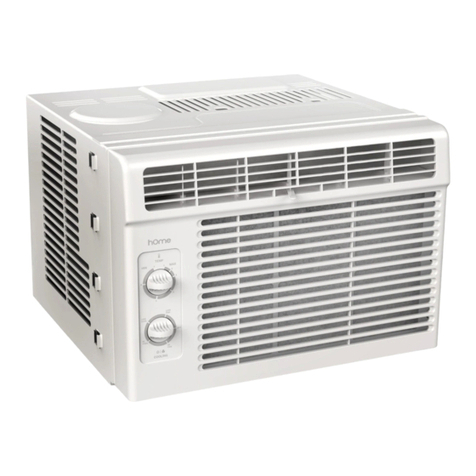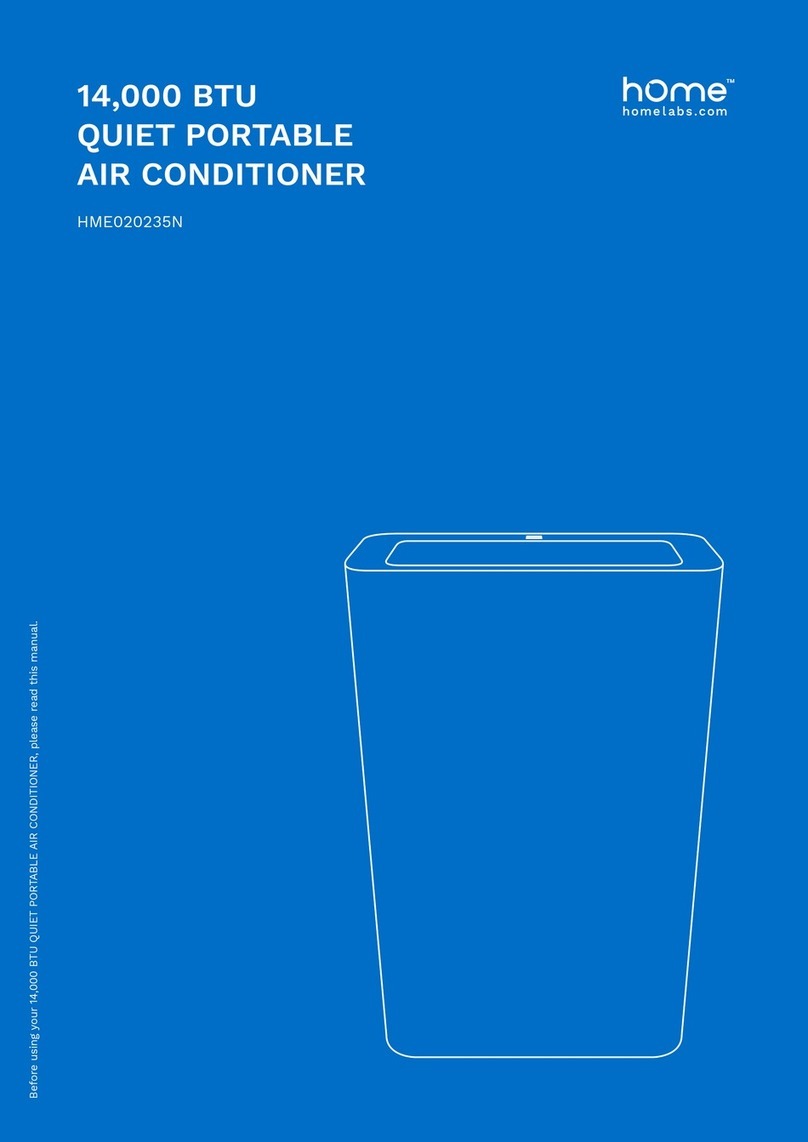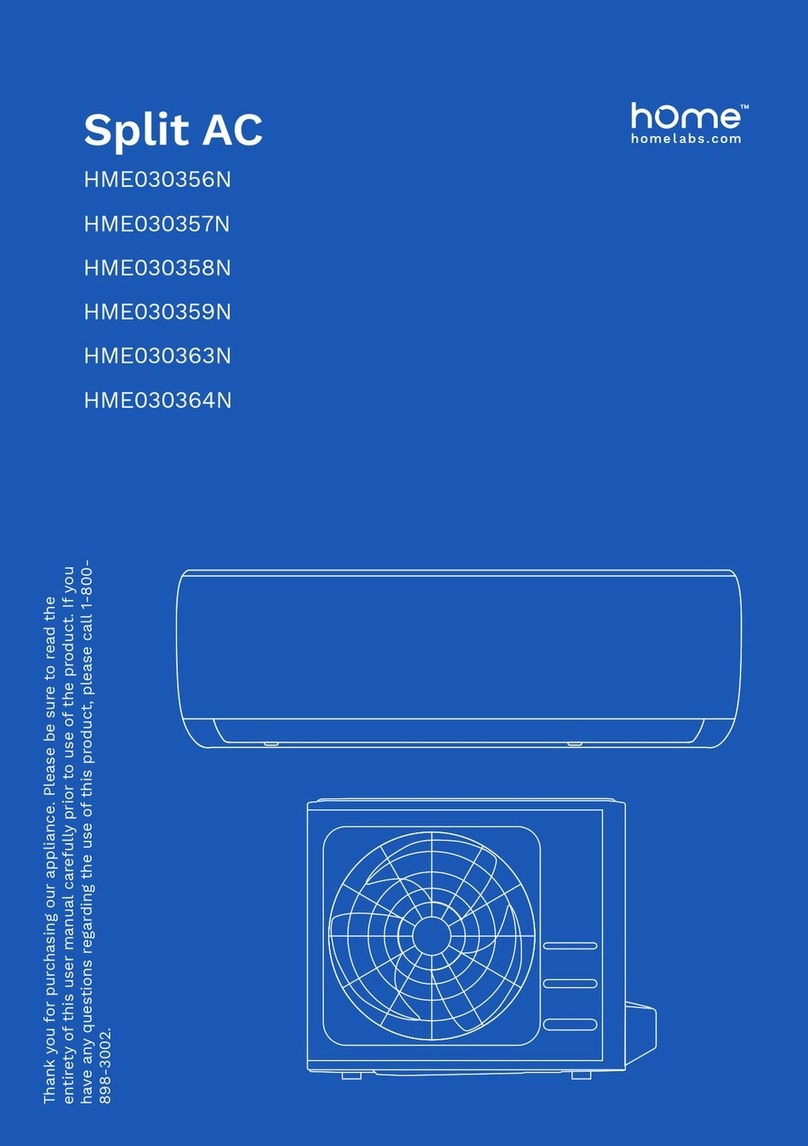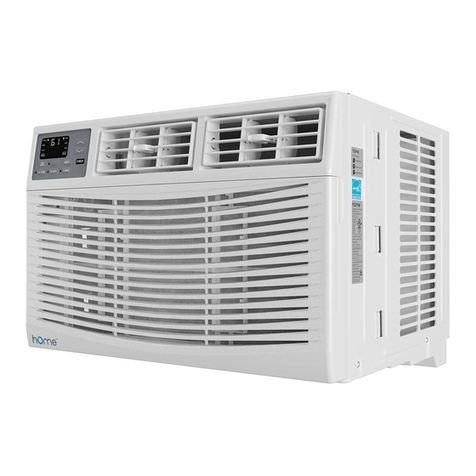
6
Important Safety Instructions
READ THIS MANUAL
Inside you will find many helpful hints on how to use and maintain your air conditioner properly. Just a
little preventive care on your part can save you a great deal of time and money over the lifespan of your air
conditioner. You will find many answers to common problems in our chart of troubleshooting tips. If you
review our chart of Troubleshooting Tips first, you may not need to call for service at all.
To prevent personal injury or property damage, the instructions on this manual must be followed. Incorrect
operation due to the failure to follow instructions may cause harm or damage. The seriousness of each
warning is classified by the following indicators:
WARNING This symbol indicates the possibility of death or serious injury.
Never do this. Always do this.
• The power cord should be fully plugged in and snug with the outlet. Otherwise, it may cause electric
shock or fire due to excess heat generation. Do not operate or stop the unit by inserting or pulling
out the power cord. It may cause electric shock or fire due to heat generation. Do not damage or use
an unspecified power cord. It may cause electric shock or fire. If the power cord is damaged, it must
be replaced by the manufacturer or an authorized service center or a similarly qualified person to
avoid hazard.
• Always install a circuit breaker and a dedicated power circuit. Incorrect installation may cause fire
and electric shock. Do not operate the unit with wet hands or in a damp environment. It may cause
electric shock. Do not direct the airflow at room occupants only. This could negatively affect your
health.
• Always ensure effective and proper grounding. Incorrect grounding could lead to electric shock. If
water touches any of the electrical parts of this appliance, failure or electrical shock could occur. Do
not modify the power cord length or share the outlet with other appliances. It may cause electric
shock or fire due to heat generation.
• Unplug the unit if you notice any strange sound, smell, or smoke coming out from it. It may cause
fire and electric shock. Do not use the socket if it is loose or damaged. It may cause fire and electric
shock. Do not open the casing of this unit while it is in operation. It may cause electric shock.
• Keep lighters away. It may cause fire. Do not use the power cord close to heating appliances. It may
lead to fire and electric shock. Do not use the power cord near flammable gas or combustibles, such
as gasoline, benzene, thinner, etc. It could lead to an explosion or fire.
• Ventilate the room before operating the air conditioner in case there is a gas leakage from another
appliance. Otherwise, it may cause explosion, fire, or burns. Do not disassemble or modify the unit. It
may cause failure and electric shock.
• When the air filter is to be removed, do not touch the metal parts of the unit. It may lead to an injury.
• Do not put a pet or house plant where it will be exposed to the unit's direct airflow. This could
injure or cause harm to the pet or plant. Ventilate the room well when used together with a heating
appliance such as a stove, for example, to prevent oxygen shortage.
• Do not use strong detergent such as wax or thinner to clean the unit. Use a soft cloth when cleaning
the unit to avoid change in color or the scratching of its surface. Do not clean the unit with water.
Water may enter the unit and affect its insulation, which could then lead to electrical shock. Do not
use this unit for special purposes such as preserving precision devices, food, pets, plants, and art
objects. It may cause deterioration in the quality of this unit.
• Stop using the unit during a storm or hurricane. Close the windows when operating this unit. Open
windows may cause the unit to become wet and could even lead to your home furniture becoming
wet or soaked. When cleaning the unit, switch off and turn off the circuit breaker. Do not clean
the unit when its power is turned on as it may cause fire, electric shock, and injury. Ensure that
the installation bracket of the outdoor appliance is not damaged due to prolonged exposure. If the
bracket is damaged, it could fail to secure the AC, causing it to drop and become damaged.




































